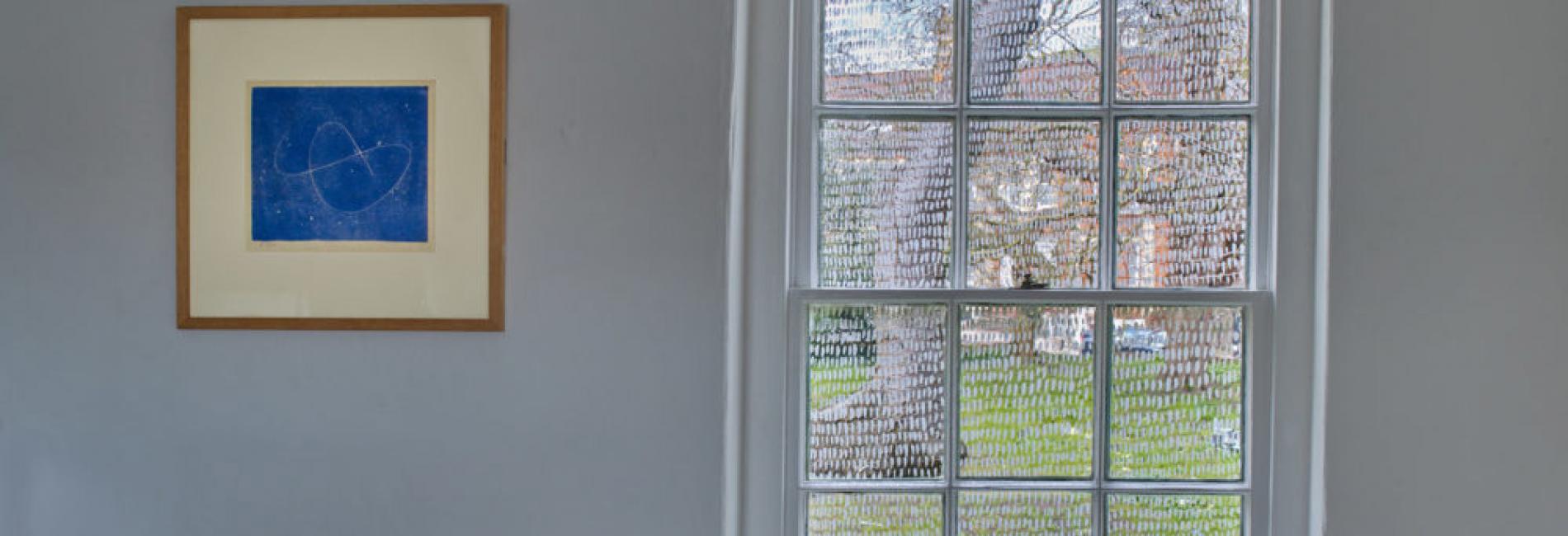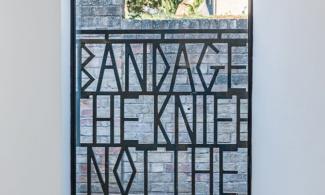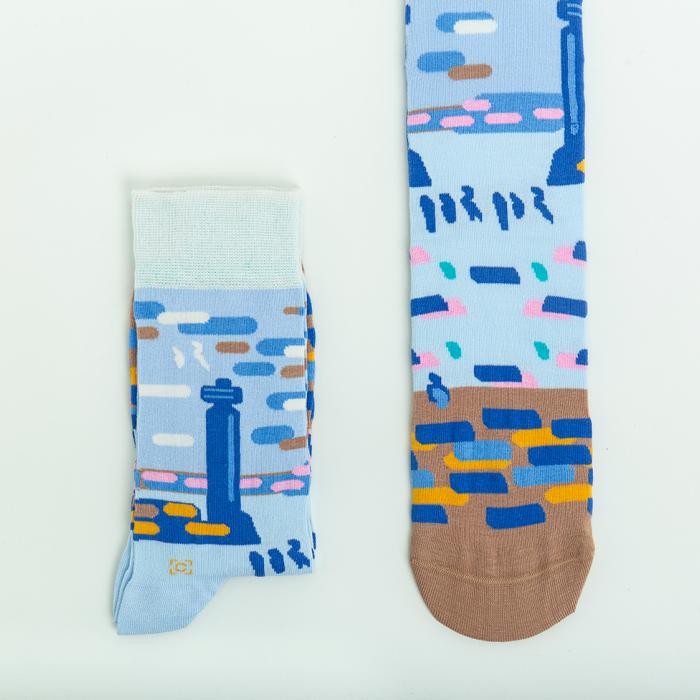Event information
Time
The House is open
Tuesday – Sunday, 12 – 5pm
Please note, last entry into the House is at 4.30pm.
#ACTIONSkettlesyard
The veil uses chalk from the white cliffs of Dover, in an intervention that beckons forth notions of home, identity — and the presence of the room’s former occupant. Parker’s installation in the House for Actions currently remains on one of the windows in Helen’s bedroom.
Excerpt from the Actions book, by Dr Sarah Lowndes
Between 1957 and 1973, when the Edes lived in the House, Helen, whose two daughters were grown up, would often withdraw to her light-filled room for peace and recuperation from her intertwined roles as wife and host. Helen’s room lay outside of Jim Ede’s carefully considered arrangement of the rest of the House: simply decorated, it has an ambience of solitude and contemplation similar to that conjured in Virginia Woolf’s essay “A Room of One’s Own” (1929).
Parker’s work for Helen Ede’s bedroom is one of a series of recent projects in which the artist has examined ideas of transition, transference and the psyche. After being inspired by a collection of small tokens left by mothers with their abandoned babies, Parker selected over sixty artists to participate in the exhibition ‘Found’ (2016) at the London Foundling Museum. She commented, “In order for something to be ‘found’, it has to at some point in its history been ‘lost’.” Also in 2016, Parker created Transitional Object (PsychoBarn) for the roof garden of The Metropolitan Museum of Art in New York. The artist dismantled a barn and reconfigured it as a replica of the Bates motel from Hitchcock’s thriller Psycho (1960), where the deranged Norman Bates lived alone, imitating his dead mother. The title of Parker’s work, Transitional Object, referred both to the artist’s characteristic methods of construction, but also to psychologist D.W. Winnicott’s term for the comforting toys which help young children to settle when separated from their parents.
About Cornelia Parker
Cornelia Parker (born 1956) studied at the Gloucestershire College of Art & Design and at Wolverhampton Polytechnic before receiving her MA in Fine Art from the University of Reading in 1982.
She has exhibited all over the world. Recent exhibitions include The Palace of Westminster, London (2018); Hayward touring exhibition, UK (2018/19); Metropolitan Museum of Art, New York (2016); Whitworth Gallery, Manchester (2015); Terrace Wires Commission, St Pancras International Station, London (2015); British Library, London, touring to Whitworth Gallery, Manchester and Bodleian Library, Oxford (2015); Ikon Gallery, Birmingham (2014).
In 1997 she was shortlisted for the Turner Prize. She was appointed an Officer of the Order of the British Empire and elected to the Royal Academy of Arts, London in 2010. Parker was the UK’s official Election Artist for the 2017 general election.
Important information for your visit
Due to conservation and security reasons, no bags, including handbags, or large coats are allowed in the House.
Please note that the House is not fully wheelchair accessible. Cornelia Parker’s installation is upstairs in the House. There is no lift. For further access information please visit our access page online or call 01223 748100.
There is a virtual tour of the House available online here.
Please note that there are no toilets in the House.
No food or drink are allowed in the House.
Entrance to the House is by free, timed entry tickets. These can be picked up from the information desk on the day of your visit or online up to one day in advance of your visit. Click here to book a House ticket now.
The House is open:
Tuesday – Sunday, 12 – 5pm
Please note, last entry into the House is at 4.30pm.



